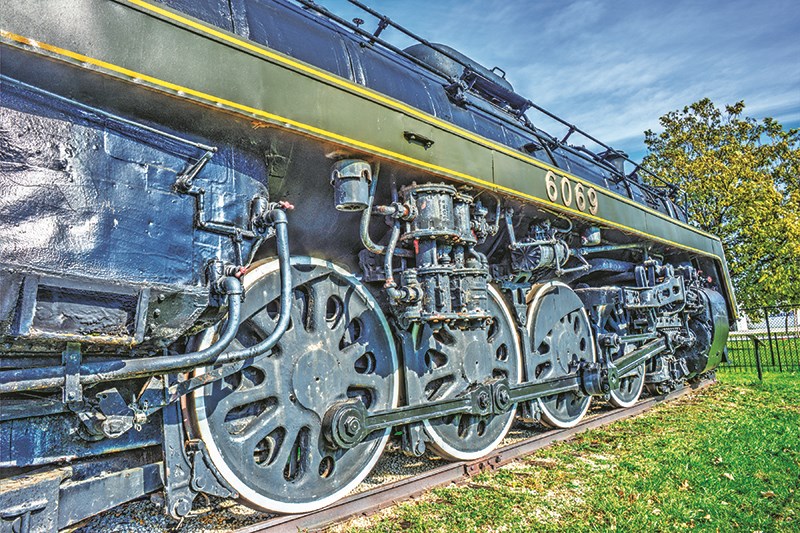Phil Egan
A mystery first reported in The Sarnia Journal almost two years ago has been solved.
Restorers working on the 1940s-era steam locomotive in Centennial Park first noticed something odd about “Betty” in 2014.
Welding scars indicated the engine has been in a violent collision, according to Peter Whitfield, volunteer manager of the restoration project at the time.
A whole new frame had been welded to the front of the locomotive, and Whitfield at the time described the damage as “a mystery we have yet to solve.”
It took some time, but Whitfield and his team now have the answer.
Engine 6069, as she is officially known, was one in a series of locomotives built for the C.N.R. in 1944 by the Montreal Locomotive Company. Numbered 6060 through 6079, the Mountain class engines were the state-of-the-art in steam locomotive efficiency and design during the heavy rail traffic wartime period.
Featuring a one-piece cast frame, their clean lines, flared stacks, conical noses and distinctive speeds quickly earned them a nickname in railway lore – “Bullet Nosed Bettys.”
On Dec. 9, 1949, just five years after rolling off the line in Montreal, Engine 6069 was hauling the C.N.R. Transcontinental passenger train eastbound from Vancouver. Rounding a curve near Oriole Station, eight miles north of Toronto, her engineer and fireman were startled to see an oncoming freight train straight ahead on the single track.
Throwing on the brakes but knowing there wasn’t time to stop, both men leapt from the engine.
Aboard the other train, Engine 6222, engineer Arthur Harrington was hauling 58 freight cars northbound for Capreol, a town near Sudbury.
The collision was loud and spectacular.
The trains hit at an aggregate speed of 40 miles per hour and the force fused the two engines together. The impact catapulted four freight cars from the track and three of them plunged 90 feet down an embankment.
A wooden baggage coach telescoped into the steel coach ahead. Two refrigerator cars on the passenger train flew into the air and narrowly missing 6069’s fleeing engineer when they landed. Coal was everywhere.
Nineteen people were injured, including a three-month-old infant thrown from her mother’s arms. The freight train engineer suffered broken ribs and internal bleeding and had to be cut from the wreckage.
Some time later, welders added a new frame to front of Engine 6069 so skilfully the weld line is almost invisible.
Today, nearly 67 years after that violent day, the beautifully restored locomotive sits peacefully on display in Centennial Park. The story of her long, and occasionally dramatic life, is now complete.

